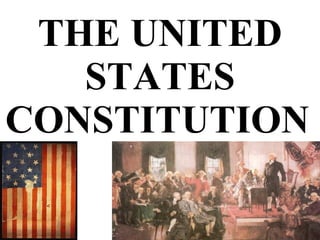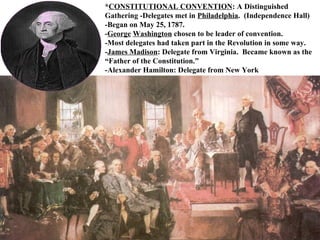The document outlines the creation and ratification of the United States Constitution, including key events like the Constitutional Convention, compromises reached around representation and slavery, and the debate between Federalists and Anti-Federalists; it also summarizes the main principles of the Constitution like popular sovereignty, separation of powers, checks and balances, and the organization of the Constitution into a preamble, 7 articles, and amendments.









































